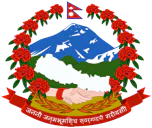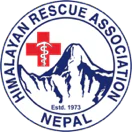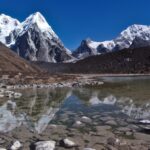
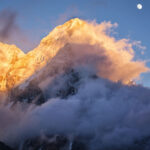
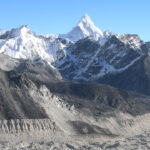
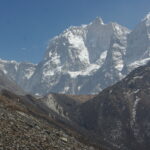
Explore the world's best trekking destination with native guides
Mt. Kanchenjunga base trekking leads you to remote areas of Nepal around Taplejung District. Located around far eastern end of Nepal Himalayas, the massif Mt. Kanchenjunga is the five jewels of snow peaks.
Mt. Kanchenjunga, the actual name “Kanchendzonga” means three Jewels in the local language of Tibetan origin. Towers high listed as the world’s 3rd highest peak at 8,586 m / 28,169 ft. The 2nd tallest mountain in Nepal Himalayas straddles the border between Nepal and Sikkim, a small state of India.
The eastern Himalayas are known as the Khumbukarna Himalaya range within the world’s highest majestic peaks of great beauty. Mt. Kanchenjunga was first ascent in 1955 by the British Expedition led by the late Sir George Band. The adventure starts with a sweeping scenic flight to Bhadrapur airport around the lower warm country of South East of Nepal.
On leaving the sub-tropical Terai belt with an exciting drive to reach cooler hills. Towards lovely areas of Ilam, famous for tea gardens and products, as the drive ends for some weeks. On reaching, to Taplejung district, the walks begin towards Tseram en route to Kanchenjunga South Base Camp. The walk follows traditional villages with well-tended farm terraces and, then entering forest covered in tall trees.
Lined with rhododendrons-magnolia-pines-birch-oaks and firs, the walk leads near Kanchenjunga South Base camp. The main base camp for mountaineers, due to its straightforward approach to the top of Mt. Kanchenjunga. The base camp is within a massive Yalung glacier with towering peaks of Bokta and Talung.
On achieving the first highlights of the adventure to Kanchenjunga South Base Camp, the adventure continues to cross three high passes.
Climb over Mirgin, Tsele-and Tamo-La, rewards grand vista Kanchenjunga and its adjoining snow peaks. The walk then enters the Northern side of Kanchenjunga at Ghunsa village of Ghunsa. The journey heads towards a higher country amidst arid and barren arctic cold landscapes at Lhonak and Pang-Pema.
To reach the North Base Camp of Mt. Kanchenjunga, on the highest point of the adventure. Enjoy the glorious views, explore the Northern Base of Kanchenjunga camp, and then head for the return journey. The walk follows towards an exciting route, on an alternative trail to Kabeli and Tamur River and past lovely farm villages.
Finally, the walk completes on reaching Taplejung and Suketar for an interesting drive to Bhadrapur airport. From Bhadrapur a sweeping scenic flight brings you to Kathmandu to conclude the adventure to Mt. Kanchenjunga Base Camp Trekking.
The Best Seasons for Mt. Kanchenjunga Base Camp are late spring and autumn. Spring starts from March to May, and most days are sunny but can get cloudy in the late afternoon. Chance of light snowfall with cold mornings and nighttime at above 2,500 m.
The next best season is autumn/fall, which begins in September and ends in November. One of the high seasons for views and pleasant walks, sunny days most of the time in autumn. But gets dark soon, due to short sunlight hours, cold morning, and late afternoon till nighttime. Expect snowfall above 2,500 m sometimes.
The route is straightforward with a signpost at each junction of the mid-ways, so there will be no confusion. The trails are good for walking around both sides of Kanchenjunga South and North Base Camps. The first part of trekking is on a pleasant winding path with a steep climb towards Tseram.
En route to Kanchenjunga South Base Camp, and then crossing three passes in a day with steep ups and downhill. The rest of the walk is pleasant with a short descent and gradual winding path through a lovely forest. From Ghunsa Village and Khambachen climb over moraines of rocks and glaciers to Mt. Kanchenjunga North Base Camp. Return journey on an alternative route with drives both ways on country rough muddy hilly road.
Mt. Kanchenjunga Base Camp Trek leads to Nepal Far East around the district of Taplejung. The Kanchenjunga lower mid hills are populated mostly by mixed tribes with Brahmin and Chettries. As well large number of Kirat, Rai and Limbu, with Magar, Gurung, and Tamang. From Sherpa Gaon to Ghunsa villages are largely inhabited by the Sherpa, the mountain tribes of the Eastern Himalayas. The Sherpa are interwoven with Buddhist religion and culture, walking into enchanting woods lined with tall blue pine, firs, oaks, and spruce trees.
Chances of spotting some wildlife like musk deer, mountain antelopes, and wild goats. Including various species of birds and ducks with colorful pheasants. Scenic views all along the walks are enclosed by tiers of rolling green hills and picturesque snow peaks. On this trek expect the unexpected and be positive, whatever it comes, especially the simple and basic lodge accommodations.
Including very simple meals with a limited food menu, and most overnight lodges with common toilets and bathrooms. The nature of the areas which are not popular trekking routes, and high terrains makes the lifestyle very simple. But worth the adventures trekking on off-the-beaten-tracks away from the main busy trekking trails.
Day 01: Fly Kathmandu to Bhadrapur (50 min. flight) drive to Illam ( 3 Hours Drive)
Day 02: Illam to Ranipul / Helok 8 hrs. drive
Day 03: Trek to Torrington 2,880 m -04 hrs.
Day 04: Trek to Tseram 3,770 m – 05 hrs.
Day 05: At Tseram for optional hike to Oktang near Kanchenjunga South BC.
Day 06: Rest Day at Tseram at leisure for short exploration.
Day 07: Cross Mirgin and Sele-La Pass 4,250 m and descent to the base at 3,700 m-08 hrs.
Day 08: Trek to Ghunsa 3,480m-04 hrs.
Day 09: Trek to Khambachen 4,000 m-06 hrs.
Day 10: At Khambachen for hike near Jannu Himal.
Day 11: Trek to Lhonak 4,780 m-06 hrs.
Day 12: At Lhonak hike to Pang Pema 5,150 m / 16, 896 feet around Kanchenjunga North Base Camp-07 hours both ways.
Day 13: Trek to Ghunsa 3,480m-08 hours.
Day 14: Trek to Amjilosa and further to Thangam 2,630m-06 hrs.
Day 15: Trek to Ranipul and drive to Illam.
Breakfast, lunch, and dinner are prepared during the trek. The meals are basic, but will give you enough energy for your appetite. Fruit is also available after each meal.
During the trek, we stay in lodges or teahouses. These are simple in nature, but fully equipped. Do not expect too much luxury.
One of the longest duration trek of more 2 weeks, involve flight both ways with exciting drive to the start of trekking. As well at the end trek at Suketar or Japantar villages. The trek is least ventured by few group of trekkers in best time of the seasons. An enjoyable walk through nice farm villages and within dense forest reaching higher altitude of arctic zone filled with ice and glaciers. The only trek that takes you to both South and North base camp of the same mountains.
The best time for Kanchenjunga Trek are spring from March to May, and autumn / fall begins from September to early November. These are the best times for pleasant walks and views, but could get snow-fall sometimes. Much colder morning and evening, night time, but with clear sunny most of the days.
Walking ups and down with few flat section, walk into lovely woods of rhododendron and pines. The trek leads to several nice villages adorned with ancient culture and heritage of Buddhism. Encountering friendly and cheerful villagers, cold morning and night time but with sunny clear days for excellent views of snow-capped peaks. Most village trail is well defined, but off the settlement and villages the path are narrow, walking on cattle herder trails. Some section on the trek can be rough with rocky ground, but enjoyable overlooking grand views of snow peaks.
The trek starts from low as 1,400 m and high above 5,150 m at Kanchenjunga North Face the highest point at Pang Pema.
Accommodation in local lodges are simple but nice, clean and cozy but smaller rooms. The main common meals available is Noodle Soup or Fried Noodles including, Nepali Dal Bhat (boiled rice and lentil soup with seasonal vegetable and home-made hot sauce or mild pickle.
Every village have hydroelectricity power; some smaller settlements have solar power. But for some days on leaving the villages there will be no electricity or facilities for hot showers.
Only in main villages like Suketar or Sherpa Gaon and Ghunsa might have internet services, but quite disturbing around deep valley and gorges? But on the way back to Suketar, most villages do have internet and Wi-Fi services.
As Kanchenjunga a remote area trekking adventure around far eastern Nepal. Minimum of 2-3 people for this treks. Requires to book with the best local company, at least one month or earlier the best. Sending your passport details, and advance payment with photo copy of Travel / Medical Insurance. Rest of the trip balance to be paid on arrival in Kathmandu before trek departures.

